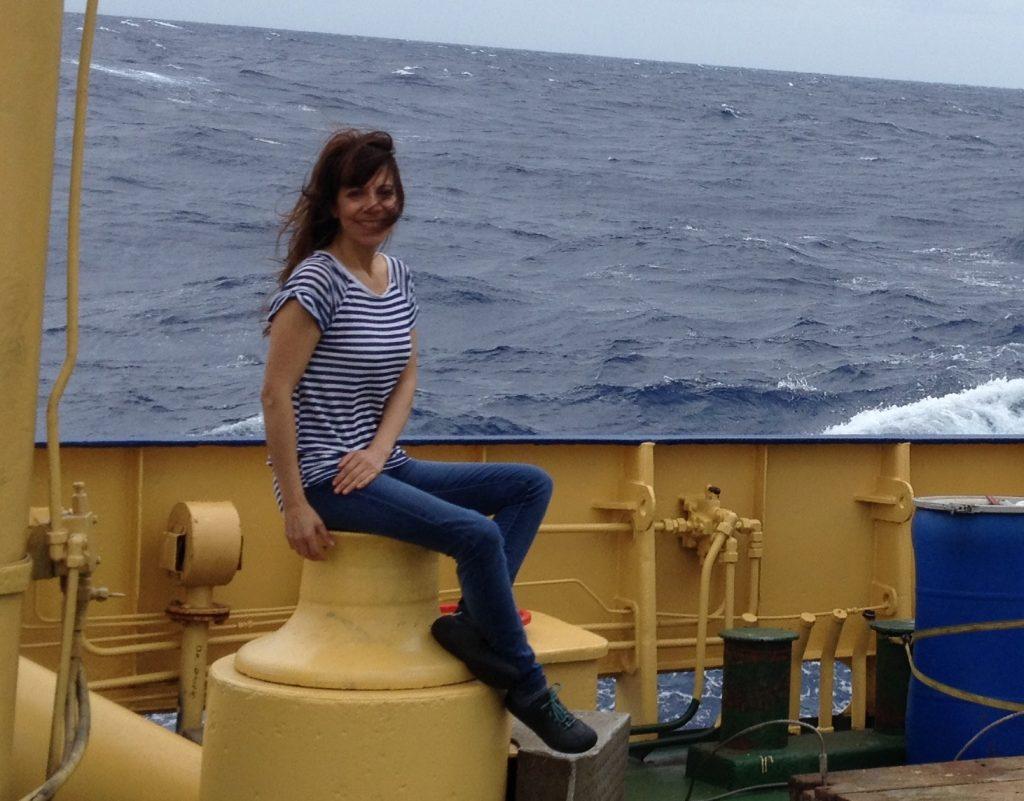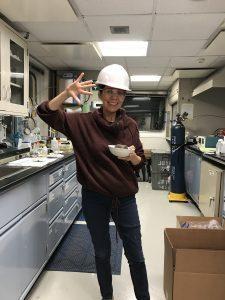
Ligia Pérez Cruz: An Oceanographer in Love With The Deep
This Q&A is part of the “Career Spotlight” series of Expedition 385

Where are you from and what is your expertise?
I was born in Mexico City — one of today’s megacities — and spent my childhood there. I am an oceanographer at the National Autonomous University of Mexico (UNAM) and I’m interested in the climate and ocean dynamics in the geological past.
Why did you decide to become a scientist?
I am attracted to nature — oceans, mountains, forests, deserts, plants, animals, microorganisms, etc…
I studied biology, which provided me with a wonderful opportunity for a kaleidoscopic vision of the diversity and complexity of life’s evolution and the organisms that have inhabited the planet
In a fortunate random step, I arrived at UNAM’s Marine Sciences Institute and ended up aboard of the R/V Justo Sierra for an expedition in the Campeche Sound, in the southern Gulf of Mexico. It was love at first sight and I knew what I wanted for a life career. I started studying fossil microorganisms in sediment cores and bottom samples, and from there, I navigated into other research endeavors.
How does your research change your field?
I study climate and ocean variability, processes, mechanisms and teleconnections.
My research focuses on the paleoclimate reconstructions for the Tropical Pacific Ocean, Gulf of California, for the past thousand years. My research is inter- and multidisciplinary, since I use different tools of micropaleontology, geochemistry, isotopes, sedimentology, magnetic properties, electronic microscopy and modeling.
These investigations are important for understanding the role that tropics play in the Global Climate System, one of the best examples is El Niño Southern Oscillation phenomenon (ENSO), teleconnections, among other factors and processes.
I am also working on the Chicxulub impact crater, in the Yucatan platform, and mass extinctions, participating in the IODP and ICDP drilling projects. They cover a wide range of themes, including studies of the Paleocene-Eocene Thermal Maximum and other hyperthermal events during the Cenozoic Era. The significance of these studies is to understand how the life was recovered after a mass extinction and the consequences of global warming.
What is your favorite thing about being a scientist?
The adventure of searching for answers, formulating questions and going to places I didn’t even know existed most of the time. I always get surprised with the diversity and complexity of the planet and its life. I love navigating, exploring and investigating the geological and fossil records, and figuring out the mega puzzle of Earth’s life evolution.

Is there something that has radically changed the way you look at things?
Yes, the beauty and complexity of the planet and the life that lives in it — the thousands of processes, feedback mechanisms and interconnections. Also, the complexities and sometimes unpredictability of fellow researchers and human society.
What advice would you give to a teenager that is interested in a scientific career?
Keep learning and reading. Be curious. Keep the capacity to be wondered and never give up, always trying one more time.

Why did you decide to come on EXP385?
I have been navigating and studying the Gulf of California for several years, investigating the sedimentary sequences, paleoceanography and paleoclimate. My research focuses on the marginal and axial basins, drilling and coring, looking at the water column, ocean currents and doing bathymetric surveys.
Expedition 385 presented a great opportunity for studying and understanding the Guaymas Basin — the evolution, processes and dynamics of the Gulf and the tropical Pacific.
Forty years have passed since the first ocean drilling expedition to Guaymas Basin and in this context, I feel fortunate being able to join this new drilling expedition. International drilling programs open interesting opportunities and this one was a no-brainer for me.
What’s the best and toughest part of being on the JR?
Nothing really best or though — I enjoy the onboard work and life. These two months have been a wonderful experience and I’m still happy and smiling. The JOIDES Resolution is an incredible research vessel with well-equipped laboratories, drilling capacities, office space and other amenities.
What do you do when you’re not on shift on the JR?
I’m always busy trying to catch up with the work offshore. I am director of UNAM’s oceanographic platforms and the vessels (R/V El Puma, which sailed close to us, and R/V Justo Sierra). I’m also president of the Mexican Geophysical Union (the annual meeting happened while on board and we did a broadcast with them!). Also, I enjoy the sea and sunsets in Baja California and the Gulf, which are particularly special. They make you realize the vastness and grandeur of nature and our place in the Universe, which reminds me of Carl Sagan´s remarks on “Pale Blue Dot.”
What essential things did you bring on board?
Chocolates, alegrías (Mexican sweets), cashews, my cell, and photos of my loved ones and of past travels.

What hobbies do you have back home?
I listen to music, I read and practice Pilates and yoga.
Is there anything else you would like to tell me?
Yes. I prefer the profound, in-depth things, rather than the daily vanities — just like a mermaid spends more time in the deep instead of the ocean’s surface — and I love being an oceanographer.